
Photo by Danielle MacInnes on Unsplash
A month ago, I wrote an article on the Designing a Retrospective Using Liberating Structures. D-Day has finally arrived, and since nothing is going exactly as planned, I suggest you describe what really happened during this workshop!
As usual, elements of structure, atmosphere and content!
Happy reading 🙂
Reminder of the initial plan
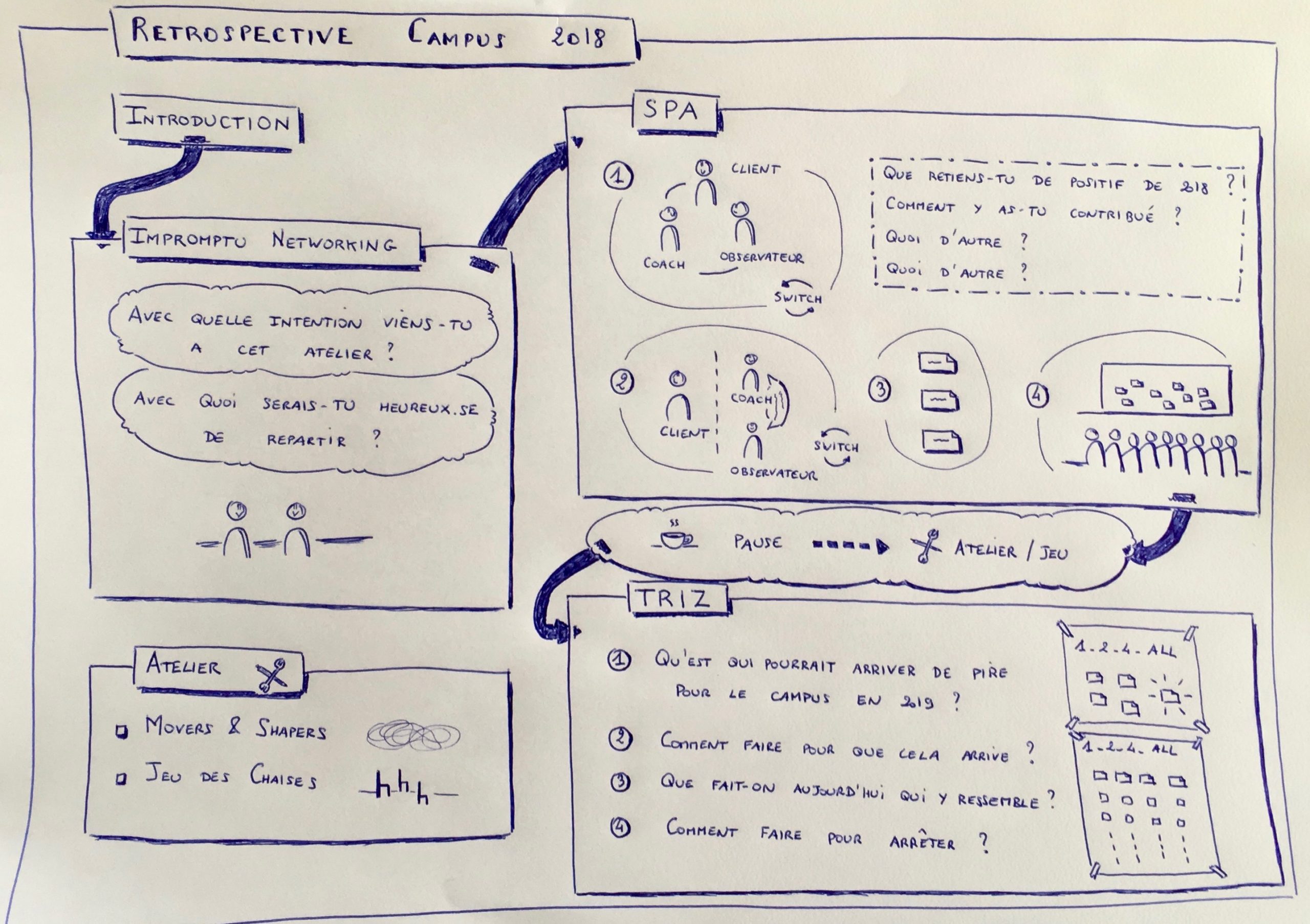
Here is what was initially planned for this retrospective (with a hypothetical timing):
| Timing | Content |
| 9:30 a.m. | Introduction |
| 9:35 a.m. | Impromptu Networking |
| 9:50 am | SPA |
| Step 1: Sharing with Client, Coach and Observer | |
| Step 2: 2-way conversation between Coach and Observer | |
| Step 3: Selection of main ideas | |
| Step 4: Large group sharing | |
| 10:20 a.m. | Break |
| 10:40 a.m. | Movers and Shapers |
| 10:55 | TRIZ |
| Step 1: Choice of the main problem to be studied | |
| Step 2: Defining the strategy to achieve this result | |
| Step 3: Reconciliation with the current situation | |
| Step 4: Strategy to stop counterproductive actions | |
| 12:00 p.m. | Debriefing |
| 12:30 p.m. | End of the workshop |
Let's see what really happened! 🙂
Introduction
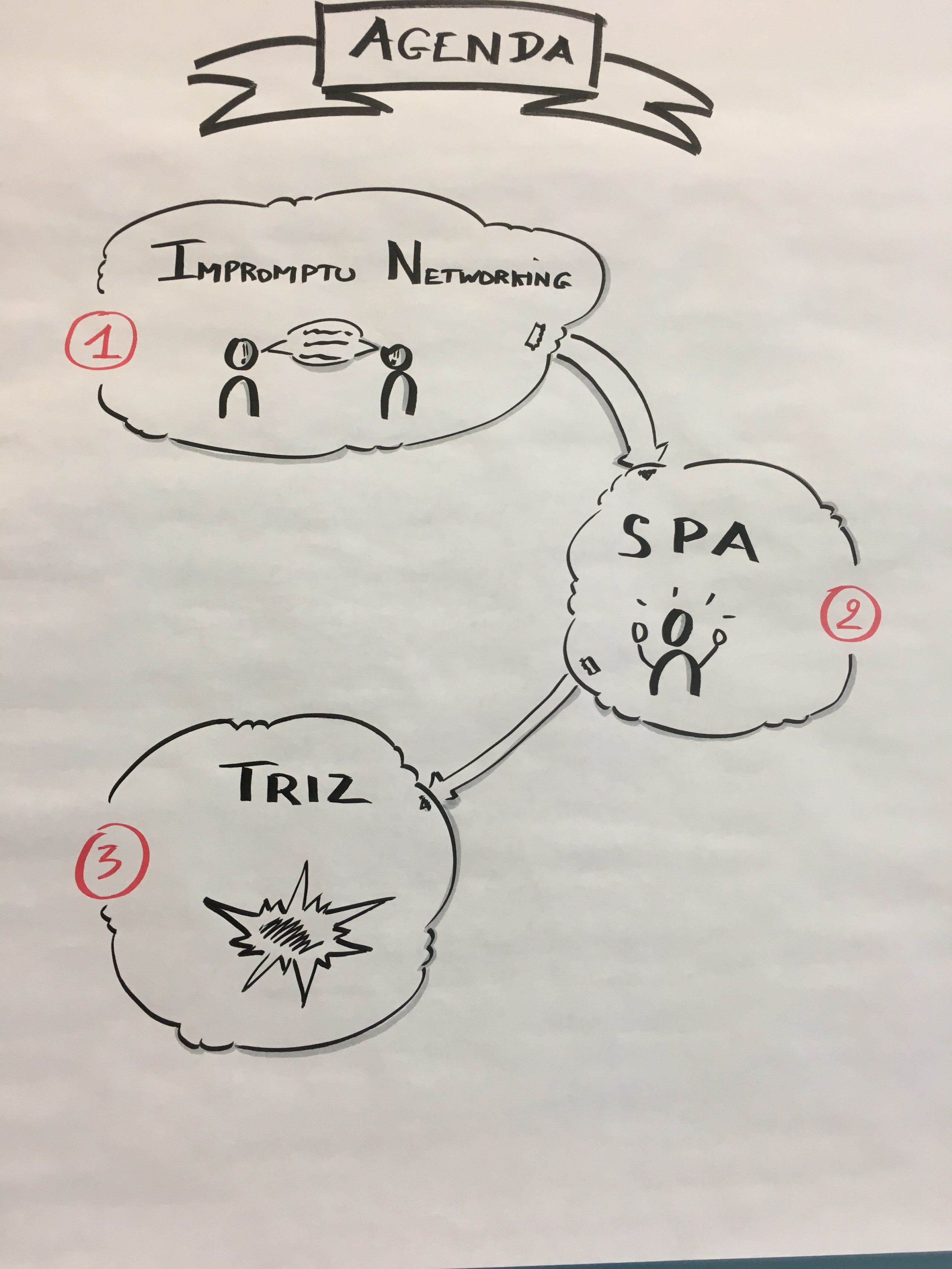
As usual, I arrive a good hour early to prepare my posters and exchange a few words before the session with the sponsors. One piece of information that concerns me is that the team is invited at 9.30 am for breakfast, which means that the entertainment will only really start at 10 am.
| Note: an adaptation of the timing will therefore be expected knowing that the deadline of 12:30 p.m. is fixed, the afternoon program being already well put together. |
The moment of the introduction therefore arrives quietly with a start with the sponsors as I recommend most of the time. Indeed, it gives an additional impetus to the group, meaning to everything that will follow and at the same time allows me to take the mandate on the frame.
I then present the agenda, indicating to the participants that the session will be composed of 2 main parts:
- A retrospective – in order to look back and take note of what has been achieved together
- A perspective - in order to look ahead and take the first steps towards this new year with energy
We then embark on the first phase: Impromptu Networking.
Impromptu Networking
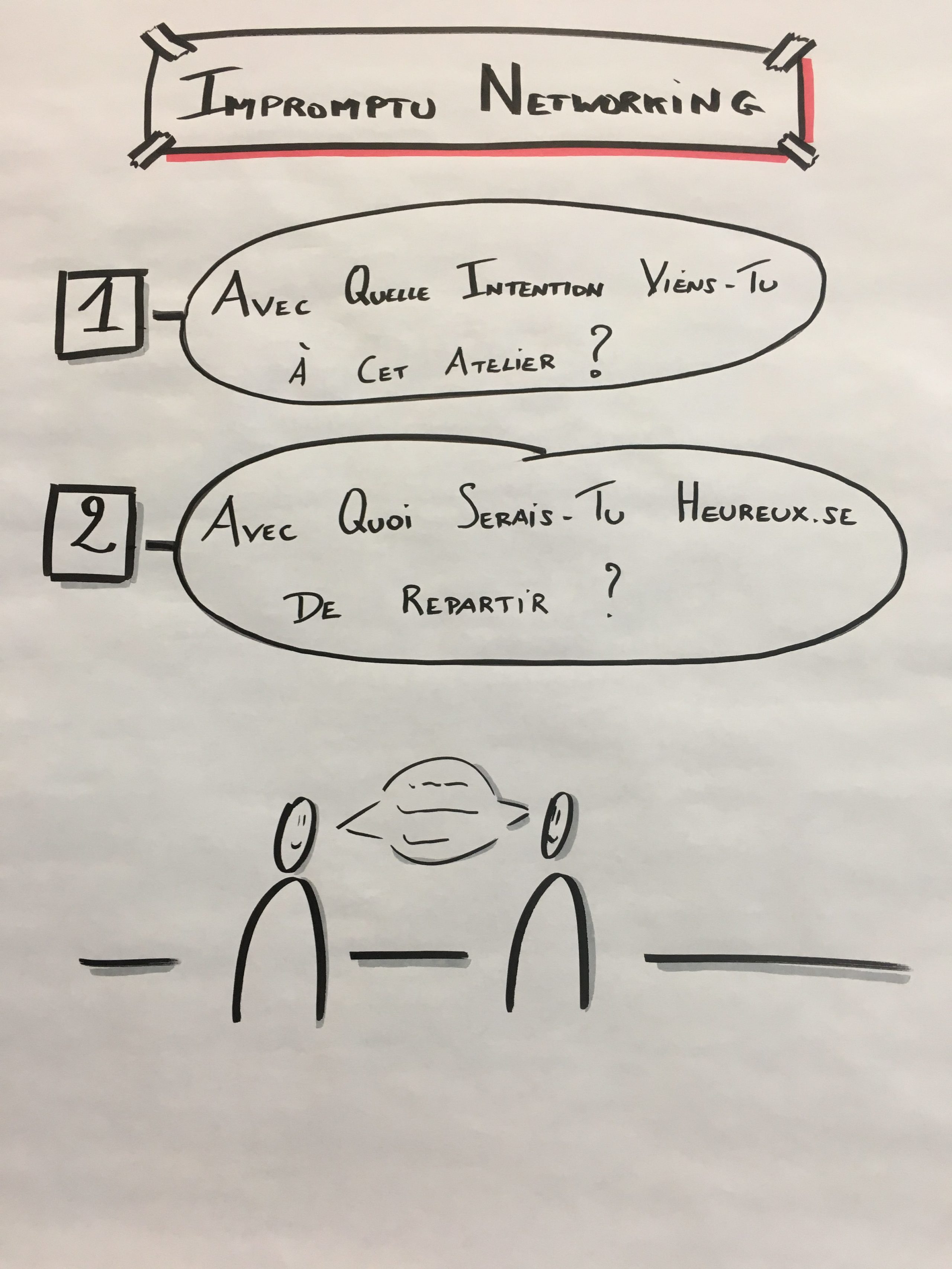
It is 10:05 a.m., so we start “ as expected with Impromptu Networking.
I invite the participants to form pairs in which they will have to answer in turn, for 2 minutes, the following questions:
- With what intention do I come to this workshop?
- What would I be happy to leave with?
We will change pairs 3 times.
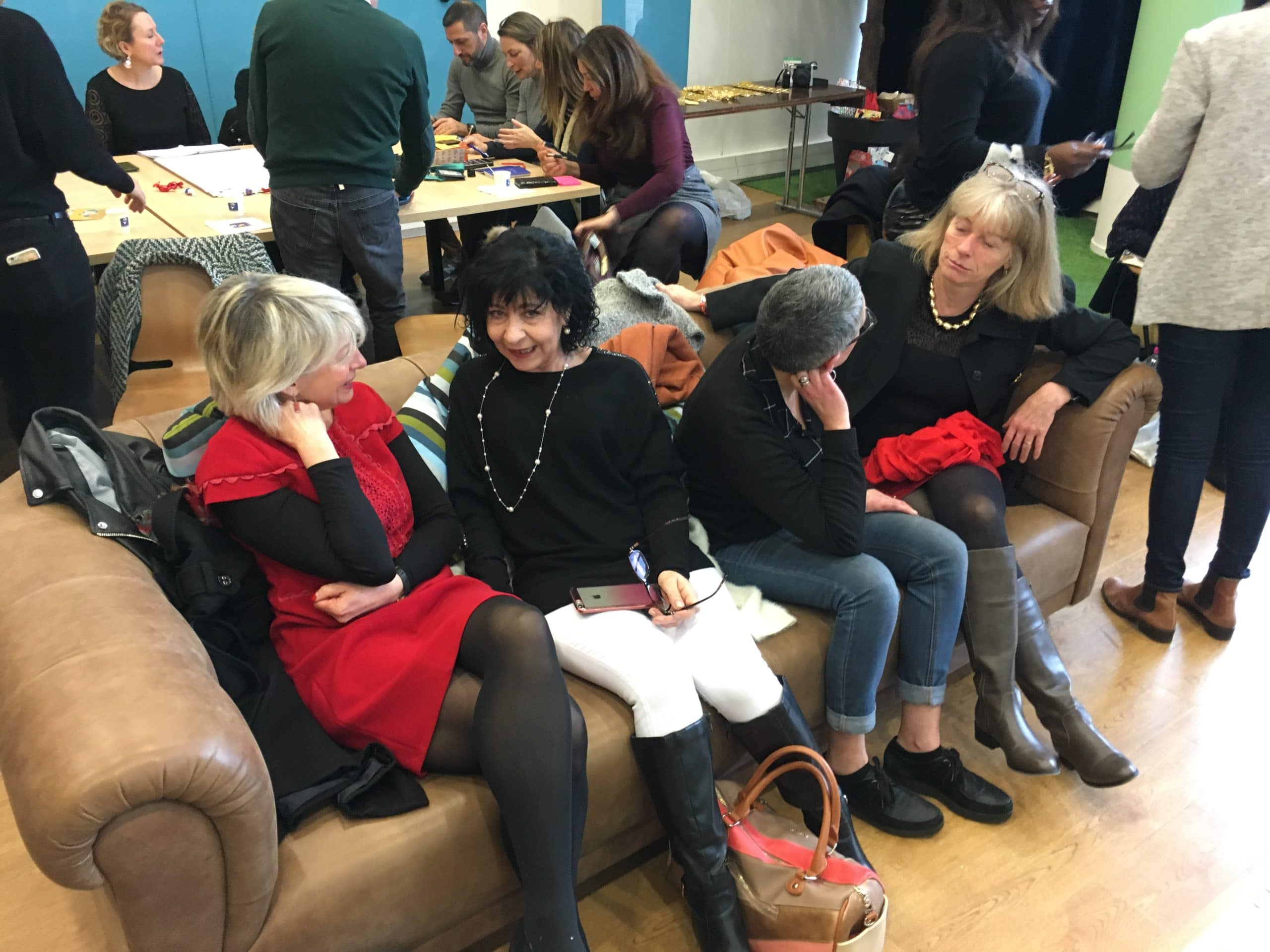
1st round
Despite the simplicity of the structure, I myself was a little uncomfortable at first. Indeed, I had the feeling that the group had difficulty getting started and that potentially 2 minutes per person would be a bit long. So I played a little on the time in the first round, leaving only 1mn30 per person.
2nd round
The moment of the switch is always perilous: either it happens fluidly, or people are lost and cannot quickly find a partner.
In my case, people who already know each other, things went rather well even if most of the time the profiles did not mix too much. Indeed, this year the group included a large proportion of apprentices – not accustomed to this kind of exercise – and who generally stayed together during the exercise.
It doesn't matter, the idea of this part is simply to get people moving a little bit anyway! 😉
The 2nd round then passed quietly. People who have already passed the first round already knew more or less what to say. It was interesting to see that in these new pairs, each was more easily able to seek out what the other had to say. So I opted for 2 minutes per person this time.
3rd round
The 3rd lap was particularly fluid. Indeed, the exercise being known, the changes are made quickly and the discussions are immediately invested by the people. The 2 minutes each are therefore full and it is more difficult for me to stop the exchanges between pairs! 😛
I was amazed by the energy released by this little exercise. After a quick debriefing with the participants, I invite them to reuse it during their next meetings, if necessary!
| Note: Having considered the necessary timing adjustment, I tried to save some time on this part knowing that it was only there to prepare the ground for the others! 😛 |
We then move on to the famous SPA! 🙂
SPA
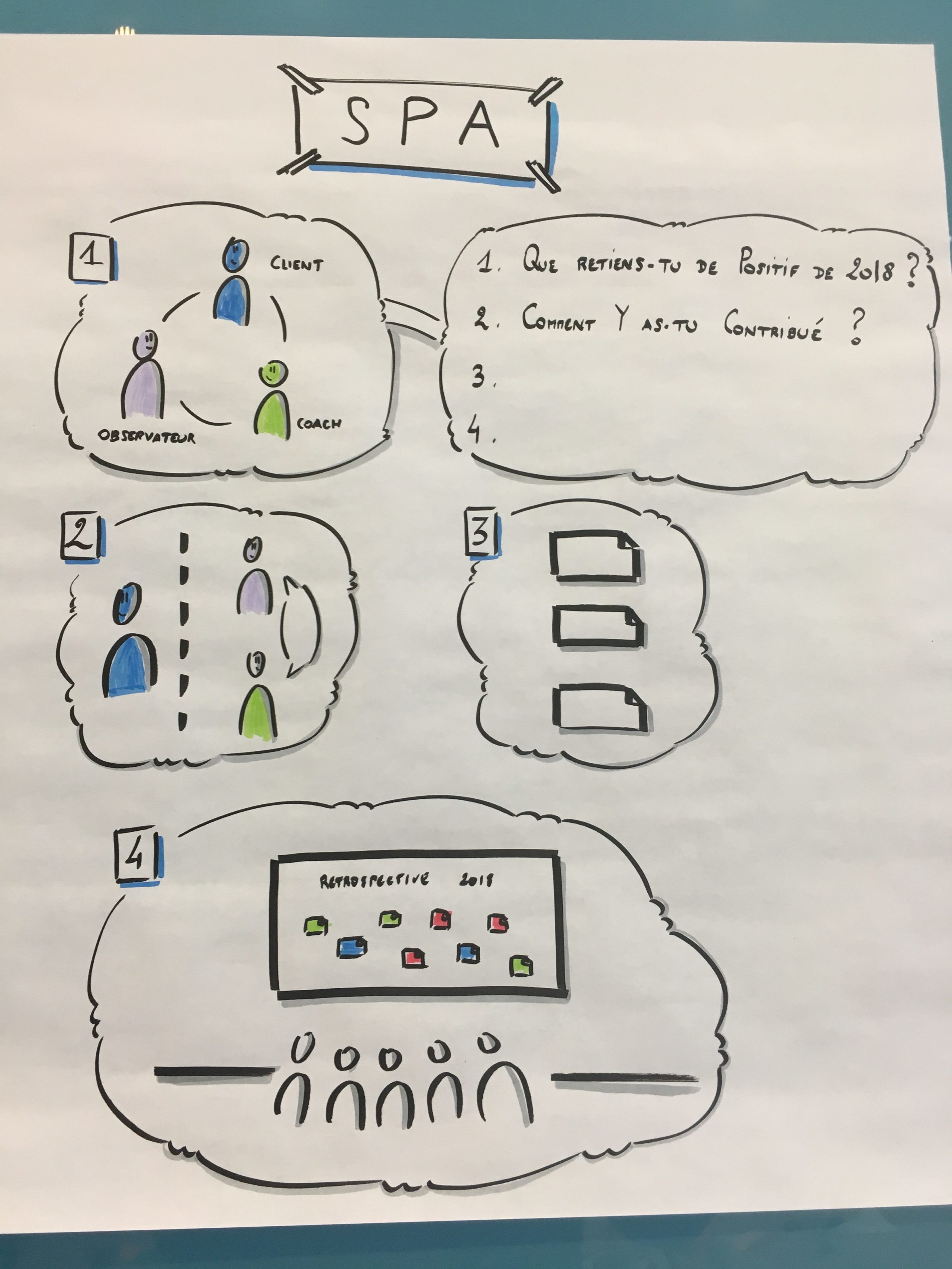
It is 10:25 a.m., we are good in timing and we continue with the SPA to create a warm atmosphere for the participants.
Step 1: Conversation between coach and client
I then invite the participants to get into groups of 3 with:
- A coach : who will ask a certain number of questions (4 in our case)
- A customer : who will have to answer each question for 2 minutes
- A observer : who will be an additional witness of the conversation
Each member of the group then takes turns in the different roles.
The questions of the coach are then the following:
- What positive do you remember – in the activity of the group – in 2018?
- How did you contribute to it?
As you can see, the following 2 questions were not indicated on the poster. The idea being to keep them surprised! 😉
We then launch the first round in which I recall each question as it arises.

When we get to the 3rd question, I tell them that the next one is:
What else ?
When we get to the 4th question, with a slight delay, I tell them that the next one is:
What else ?
After a few signs of astonishment and a few smiles, the participants play the game and continue their conversations!
We then switch roles. The laps go by rather smoothly knowing that the first lap had served as a warm-up. I nevertheless try to accompany the group by recalling the questions and maintaining the timing. The "what else?" » turns into a game, it is stated by the participants even before I had time to say it! 😛
At the end of the allotted time, we quickly debrief on the exercise that has just taken place: a participant indicates that the “what else? was extremely powerful and pushes the other to go further and deepen their ideas! I share with them that it is one of the coaches' favorite weapons! 😉
A great discovery, so much the better! 🙂
Step 2: Conversation between Coach and Observer
When everyone has passed, we move on to the next phase: the real SPA phase! 🙂
I then invite each group to position themselves as follows:
- The coach and the observer stand face to face (or side by side if not the choice) in order to be able to have a conversation
- The client turns his back on them but listens carefully so that he can hear what he is saying
- The coach and the observer discuss for 2 minutes what they retained from what was expressed by the client during the first stage: the important events, the gestures of the client, the words he or she used that caught their attention...

Each person will therefore spend in turn for 2 minutes in their SPA.
By observing the different groups, I found that the atmosphere created by this workshop was very positive. Indeed, most of the clients had a smile on their face listening to this conversation which concerned them. It is also a way to obtain feedback indirectly on the messages that we have been able to send and to have an alternative vision of our comments.
It's hard to stop bands when it feels so good! 😛
It was nevertheless time to close the Retrospective part of the session with steps 3 and 4!
Step 3 and 4: Selecting and sharing main ideas
In order to be able to have a global vision of 2018, I invite each group to select the 3 great ideas that have emerged from their discussions and to write them on Post-Its. It is these 3 great prides that will be shared with the whole group. I give them 5 minutes.

I then ask everyone to take turns placing their Post-Its on a flat surface for everyone to see and to say a few quick words to explain the idea behind the words inscribed. Then begins a group movement and a set of words that resonate in the room: here is what 2018 represented for them!

One might think that for a retrospective, the final deliverable is a bit light. I disagree because it depends on what you're looking at. Indeed, a retrospective is not a time when we will exhaustively list everything we did, everything that went wrong and what we should do. For me, it's a moment of sharing above all of which we must keep only the essence in order to be able to move forward: the final word cloud corresponds to this essence.
For the details, each person had the opportunity to express themselves in a small group in order to guarantee greater privacy and therefore, hopefully, greater openness.
11:25 it's time for the break, I ask the participants to come back at 11:37 sharp… which obviously didn't happen! 😛
We resume around 11:45 what risked jeopardizing the achievement of the objective in the time allowed. Even though Movers and Shapers is a quick workshop, I decided to skip it so that I could have enough time for discussions and debriefing: maximizing value in the given time, Agile you say? 😉
TRIZ
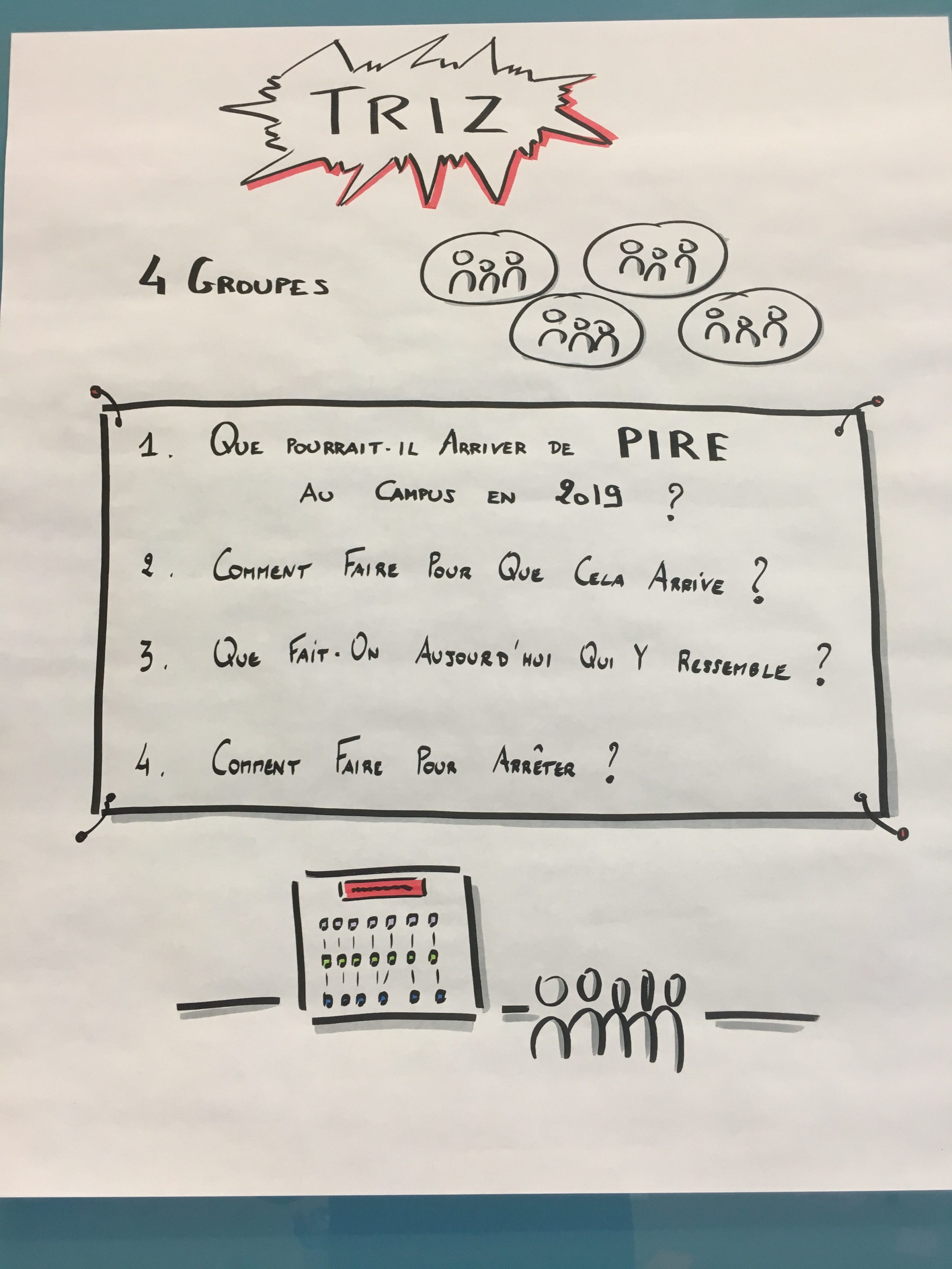
To begin, I invite all the participants to form 4 groups. Unlike the initial plan, I decided to make these 4 groups work independently and to make potential groupings at the end.
Indeed, given the number of people and the diversity of profiles, I felt that it was more relevant to open up options on 4 major themes than to focus on a theme that might not affect everyone. We will see if there are overlaps! 🙂
Step 1: Define the worst outcome
First, each group will be asked to answer the following question:
What could be worse for us in 2019?

To do this, I invite them to use the 1-2-4-All structure:
- 1 minute of individual reflection
- 2 minutes for 2 to discuss everyone's ideas
- 4 minutes to 4 to compare the similarities and differences of ideas
- 5 minutes in full sub-group to select the main idea emerging from their discussions
| Note: of course we keep the same logic, any idea is written on a Post-it, one idea per Post-it. |
When each of the subgroups has agreed on its worst result, I invite them to quickly share them with the others in order to give a taste of the topics that will be studied.
Step 2: Strategy to get there
This step is very similar to what I use in my Kick-off structure.
Indeed, I invite each person to write down everything they could do to achieve this worst result. An idea, a Post-it, as usual.

One of the difficulties that I observe here is in the start. All ideas are welcome and I encourage each group not to set anything aside.
Step 3: Self-disclosure
This 3rd step is key in the process. Indeed, participants are invited to look again at the list constructed previously and to draw a parallel with what is happening today.
What are you doing today that resembles (closely or remotely) what you mentioned in your previous list?

One of the great difficulties here is in what one might call self-denunciation. Not in the sense that people are in bad faith and do not want to admit certain things, but rather in the sense that it is necessary to see things from a different angle.
Look at what you are doing today which, even without intending to, has a negative impact on the group and on the objectives you want to achieve. One important thing that I insist on is to look at things that we have our hands on, not things that we can see from afar and that are operated by others (otherwise the exercise would not have a lot of sense).
The exercise is not easy and I try to go through each of the groups to help participants look at things from different angles. I even go back with a group from the previous stage in the worst outcome implementation strategies to discuss more options with them. The main idea is to generate exchanges in order to open the perspectives of the group.
| Note: I think that our role as facilitator is there, to accompany in the reflection, to propose options and to leave the free responsibility of choice to the people whom we accompany. |
Step 4: Stop unconstructive actions
For this last stage of the TRIZ, I invite the participants to define actions to stop / modify elements of the list recently drawn up.
In other words,
What can you do to stop doing things that are counterproductive today?

When you move to a phase of developing solutions, ideas are generated most of the time quite easily. What I pay attention to once again is to make the ideas as actionable as possible by asking questions like:
- Is it concrete enough for everyone to be able to implement this tomorrow?
- Can you elaborate on what you mean by "trust"?
- Is this action in your hand?
- …
At the end of the allotted time, we go into the final phase of the exercise, the full group debriefing.
Debriefing
For this last step, I invite each group to give the result of their reflection to the others, specifying:
- His initial problem: in other words, his worst result
- His ways to move forward
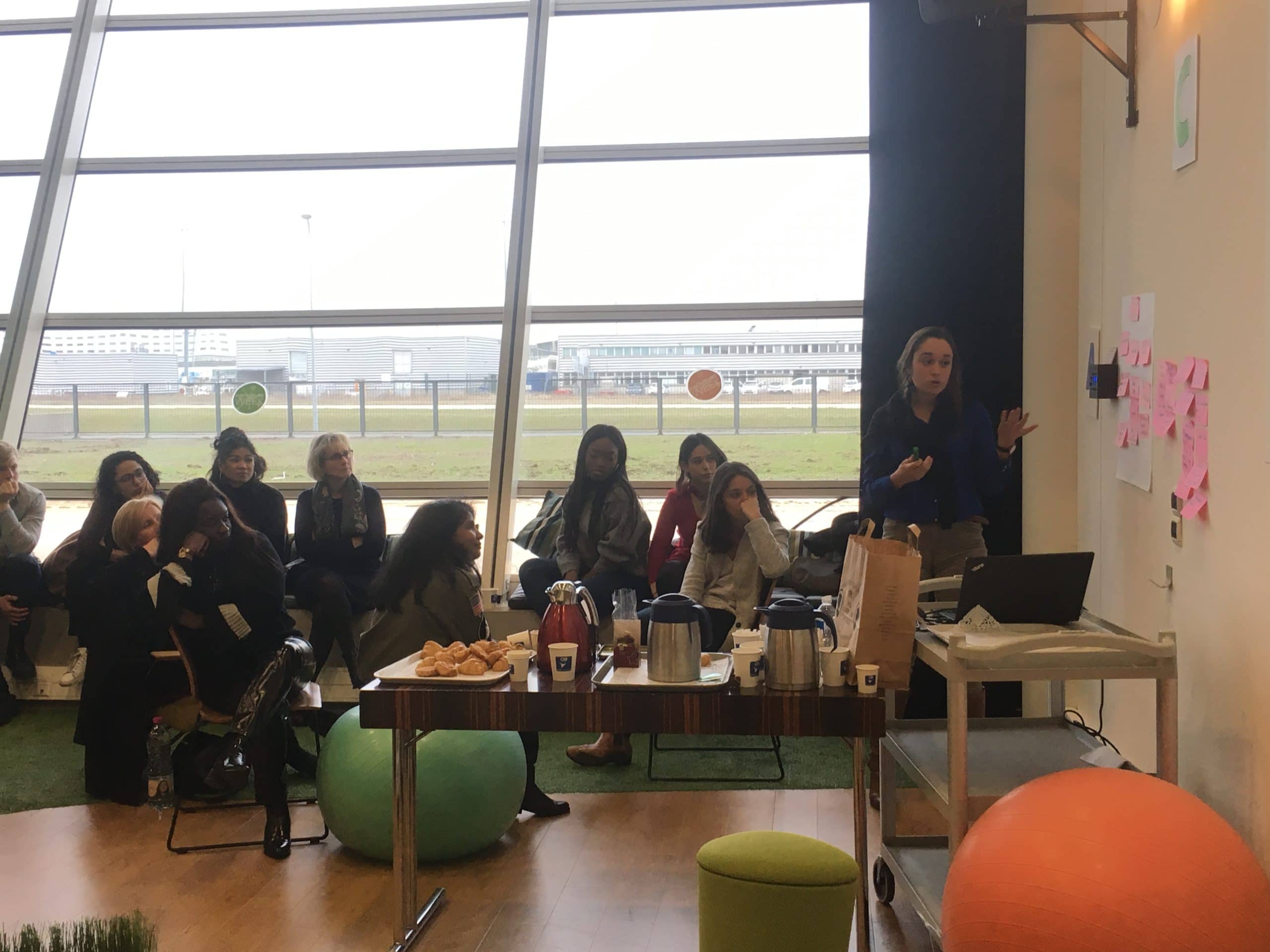
One person told me that it was difficult to make the logical link between the problem and the ideas for action without going through the process. I therefore invite him to present the thing as it means: it seems important to me to go in the direction of the energy of the participants, especially when it is constructive! 🙂
The debriefing proceeds smoothly and the different groups pass one by one explaining their results.
We then realize that 2 groups, although having different problems, end up with quite similar actions! The beauty of emergence, isn't it? 😉
Looking at my watch carefully and the last band, I see 12:28. I thank the last group as well as all the people for their participation and I close the workshop!
Conclusion

This Liberating Structures experience was quite satisfying for me! I was amazed at the power of these structures, which despite their simplicity, really had the possibility of bringing out beautiful things in this group of about thirty people.
Customer feedback along these lines:
A big thank you from the whole team for your intervention.
Outputs still rich in lessons for us and a beautiful unifying animation.
Well done!
I hope this article has been able to give you a vision of the implementation of Liberating Structures, or at least a way to do it. I think I will test others in the future and I urge you to do the same! 😉






